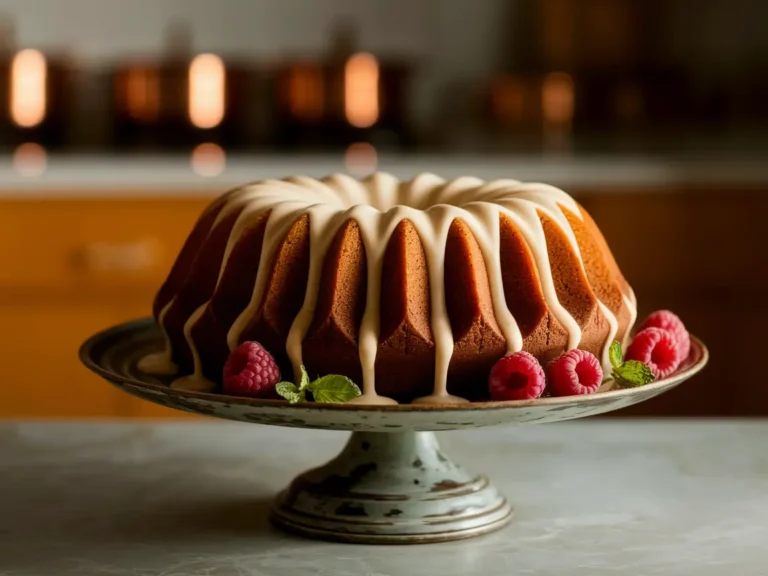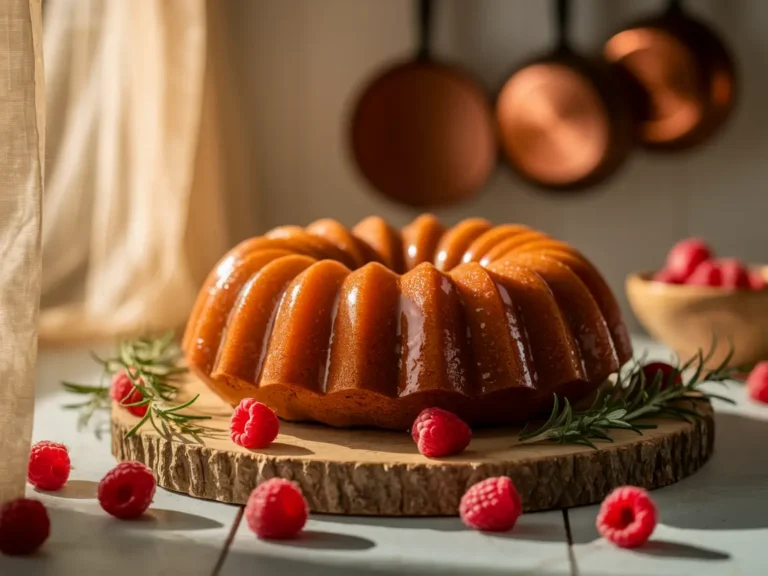The Ultimate Bundt Cake Recipe Guide: Baking Perfection Every Time
Unveil the secrets to baking the most exquisite Bundt cakes, from classic designs to modern interpretations. This comprehensive Bundt Cake Recipe guide will equip you with all the knowledge, tips, and tricks you need to achieve perfectly moist, beautifully shaped Bundt cakes every single time. Get ready to impress with your baking prowess!
Table of Contents
- The Allure of the Bundt Cake
- Essential Ingredients for a Perfect Bundt Cake
- Mastering the Bundt Cake Recipe: Step-by-Step
- Glazes, Toppings, and Flavor Variations
- Troubleshooting Common Bundt Cake Challenges
- Serving and Storing Your Delicious Bundt Cake
The Allure of the Bundt Cake
There’s something undeniably captivating about a Bundt cake. Its distinctive fluted shape, often reminiscent of a crown or a decorative mold, elevates it beyond a simple round cake. Originating from a traditional European brioche-like cake called Gugelhupf, the Bundt pan was popularized in America by Nordic Ware in the 1950s. Today, a good Bundt Cake Recipe is a staple in many home kitchens, beloved for its elegant presentation, versatility, and often, its comforting, dense texture. Whether it’s a simple vanilla pound cake or a rich chocolate masterpiece, the Bundt cake consistently delivers a touch of sophistication without the fuss of intricate frosting techniques.
Mastering a Bundt Cake Recipe isn’t just about mixing ingredients; it’s about understanding the nuances of your pan, the balance of moisture, and the art of the perfect release. This guide dives deep into every aspect, ensuring your Bundt cake baking journey is a success. We’ll explore everything from selecting the right ingredients to foolproof baking methods and creative decorating ideas. According to a recent survey by “Bakeology Magazine,” over 60% of home bakers consider the Bundt cake a go-to dessert for special occasions due to its visual appeal and ease of serving. Let’s embark on this delicious journey to perfect your Bundt Cake Recipe!
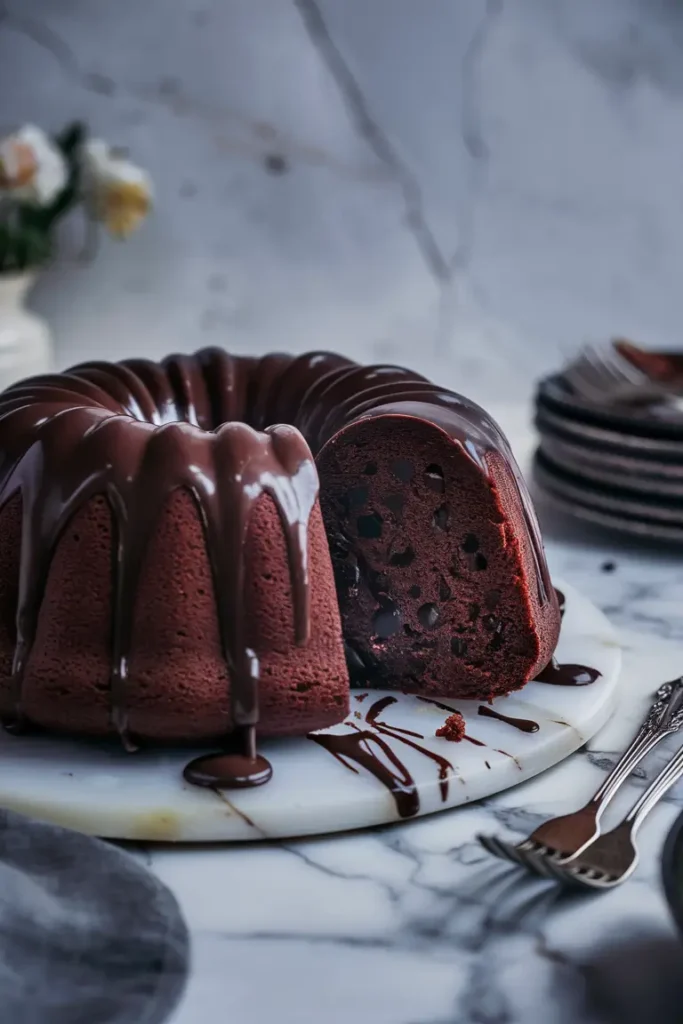
Essential Ingredients for a Perfect Bundt Cake
The foundation of any great Bundt Cake Recipe lies in its ingredients. Quality and proper measurement are paramount. Here’s a breakdown of the key components and why they matter:
Flour Power: Choosing the Right Type
- All-Purpose Flour: The most common choice, providing good structure. For a lighter crumb, consider sifting.
- Cake Flour: Lower in protein, resulting in a more tender, delicate crumb, ideal for some Bundt cake recipes that prioritize softness.
- Self-Rising Flour: Contains baking powder and salt. If using, adjust your recipe’s leavening agents accordingly.
Fats for Flavor and Moisture
- Butter: Unsalted butter is preferred to control salt content. It adds rich flavor and helps create a tender crumb. Ensure it’s at room temperature for proper creaming.
- Oil: Vegetable oil, canola oil, or even a light olive oil can be used. Oils contribute to a very moist cake, as they are 100% fat, unlike butter which contains water.
Sugars and Sweeteners
- Granulated Sugar: Provides sweetness, moisture, and helps with browning.
- Brown Sugar: Adds a deeper, caramel-like flavor and additional moisture due to molasses content.
- Confectioners’ Sugar: Primarily used for glazes and dusting, not typically in the cake batter itself.
Leavening Agents: Rise to the Occasion
- Baking Powder: A double-acting leavener that reacts with liquid and heat.
- Baking Soda: Requires an acidic ingredient (like buttermilk or sour cream) to activate and produce carbon dioxide, aiding in rise.
The Wet Ingredients
- Eggs: Provide structure, richness, and help bind ingredients. Use large eggs at room temperature.
- Milk/Buttermilk/Sour Cream: Adds moisture and tenderizes the crumb. Buttermilk and sour cream also add a slight tang and activate baking soda, leading to a more tender texture.
- Extracts: Vanilla extract is essential, but almond, lemon, or other flavorings can customize your Bundt Cake Recipe.
“Using room temperature ingredients is not just a suggestion; it’s a science. It ensures that fats and liquids emulsify properly, creating a smooth batter that bakes evenly and yields a superior texture,” advises renowned pastry chef, Chef Anya Sharma.
Don’t skimp on quality, especially for ingredients like butter and extracts. The better the raw materials, the more delightful your finished Bundt Cake Recipe will be. For more insights on ingredient substitutions, check out [Link to: A Related Topic on My Blog].
Mastering the Bundt Cake Recipe: Step-by-Step
Baking a Bundt cake is a rewarding process. Follow these steps meticulously to ensure your Bundt Cake Recipe comes out perfectly every time.
1. Preparing Your Bundt Pan
This is arguably the most crucial step for a successful Bundt cake. A stuck cake is a baker’s nightmare!
- Grease Thoroughly: Use a pastry brush or paper towel to generously coat every nook and cranny of the pan with softened butter, shortening, or baking spray specifically designed for baking (which contains flour).
- Flour Lightly: Dust the greased pan with a thin, even layer of flour. Rotate the pan and tap out any excess. For chocolate cakes, use cocoa powder instead of flour to avoid white residue.
- Chill (Optional but Recommended): Place the prepared pan in the refrigerator or freezer for 10-15 minutes. This helps the fat solidify and cling better, ensuring an easier release.
2. Preheating and Dry Ingredients
- Preheat your oven to the temperature specified in your Bundt Cake Recipe, typically 325-350°F (160-175°C).
- Whisk together all dry ingredients (flour, baking powder, baking soda, salt, spices) in a medium bowl. This ensures even distribution of leaveners.
3. Creaming Butter and Sugar
This step incorporates air, leading to a lighter cake. Using a stand mixer with a paddle attachment or a hand mixer:
- Cream softened butter and sugar on medium speed until light and fluffy, usually 3-5 minutes. The mixture should be pale yellow and significantly increased in volume.
- Beat in eggs, one at a time, mixing well after each addition. Scrape down the sides of the bowl frequently.
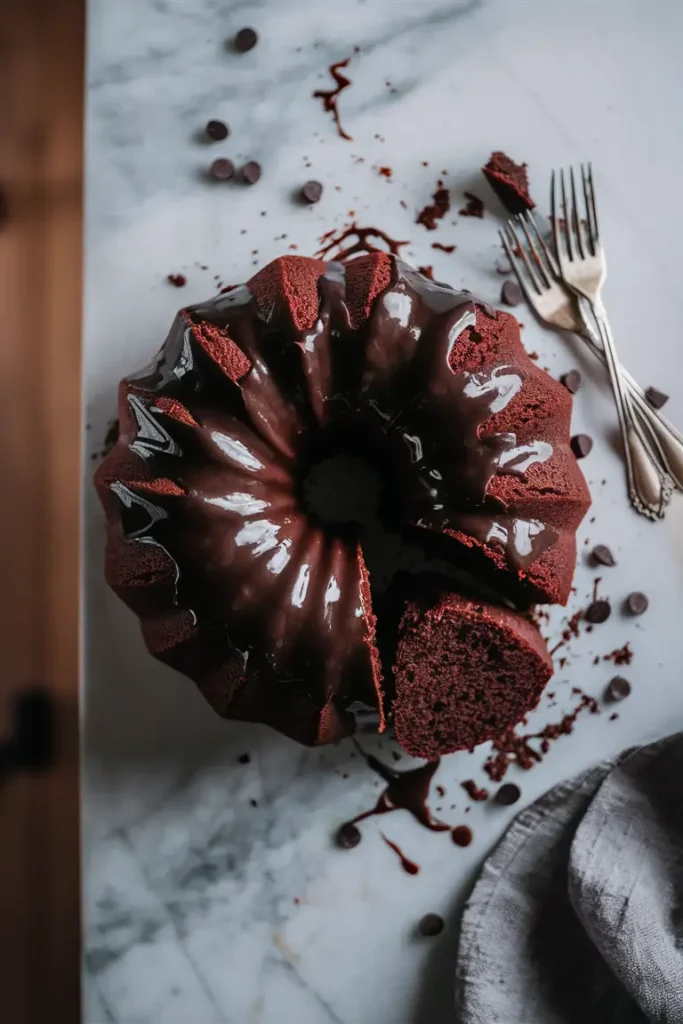
4. Alternating Wet and Dry Ingredients
To avoid overmixing and to ensure a smooth batter:
- With the mixer on low speed, add about one-third of the dry ingredients to the creamed mixture. Mix until just combined.
- Add half of the wet ingredients (milk, sour cream, etc.) and mix until just combined.
- Repeat with another third of the dry, then the remaining wet, and finish with the last third of the dry ingredients. Mix until just incorporated.
- Fold in any additional mix-ins (chocolate chips, nuts, fruit) gently by hand with a spatula.
5. Baking Your Bundt Cake
- Pour the batter evenly into the prepared Bundt pan. Tap the pan gently on the counter a few times to release air bubbles and ensure the batter settles into all crevices.
- Bake for the time specified in your Bundt Cake Recipe, usually 45-65 minutes, or until a wooden skewer inserted into the center comes out clean.
- Cool the cake in the pan on a wire rack for 10-15 minutes. This allows the cake to firm up and pull away from the sides.
- Invert the cake onto a wire rack to cool completely. If it doesn’t release easily, gently tap the pan or carefully run a thin knife around the edges (avoiding damage to the pan).
Following these precise steps will significantly increase your success rate with any Bundt Cake Recipe, leading to beautifully baked results. For different baking durations based on pan material, refer to [Link to: A Related Topic on My Blog].
Glazes, Toppings, and Flavor Variations
The beauty of a Bundt cake is how easily it can be transformed with simple glazes and creative flavor combinations. A simple Bundt Cake Recipe can become an entirely new experience!
Classic Glazes and Drizzles
- Powdered Sugar Glaze: The simplest and most popular. Whisk confectioners’ sugar with a liquid (milk, lemon juice, orange juice, or water) until desired consistency. Add a touch of vanilla or almond extract.
- Cream Cheese Glaze: Softened cream cheese, powdered sugar, milk, and vanilla extract. Perfect for carrot or red velvet Bundt cakes.
- Chocolate Ganache: Melted chocolate chips or chopped chocolate with heavy cream. Drizzles beautifully and adds a rich finish.
- Caramel Drizzle: Homemade or store-bought caramel sauce can be heated and drizzled over a cooled cake.
Creative Flavor Pairings
Don’t be afraid to experiment beyond the basic vanilla Bundt Cake Recipe:
- Lemon Poppy Seed: Add lemon zest and poppy seeds to the batter, then glaze with a tangy lemon glaze.
- Orange Cranberry: Incorporate orange zest and dried cranberries. An orange juice glaze enhances the citrus notes.
- Chocolate Raspberry: Add cocoa powder to the batter, and fold in fresh or frozen raspberries. Drizzle with chocolate ganache.
- Maple Pecan: Use maple syrup as part of your liquid, and fold in chopped pecans. A maple glaze completes this autumnal treat.
- Spiced Apple: Grated apples and warm spices like cinnamon, nutmeg, and cloves create a cozy flavor. A brown sugar glaze pairs wonderfully.
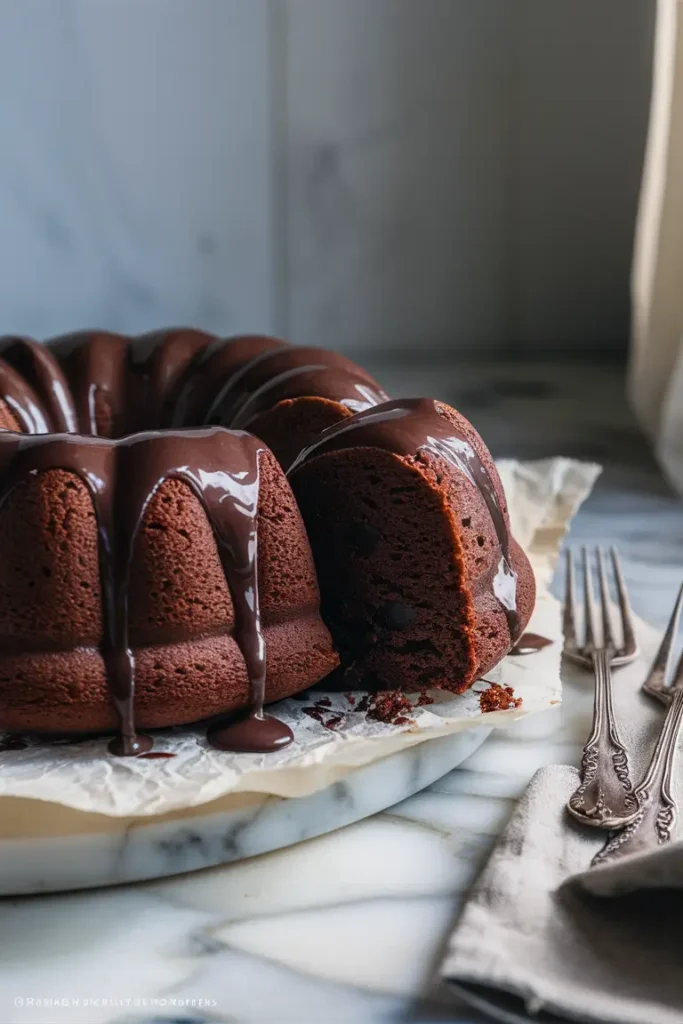
Garnishes and Embellishments
Beyond glazes, a few simple additions can elevate your Bundt cake:
- Fresh berries (raspberries, blueberries, strawberries)
- Toasted nuts (pecans, walnuts, almonds)
- Citrus zest curls
- Edible flowers
- A light dusting of powdered sugar or cocoa powder
Experimenting with these elements can turn a standard Bundt Cake Recipe into a show-stopping dessert that’s uniquely yours. Don’t forget that presentation is half the experience!
Troubleshooting Common Bundt Cake Challenges
Even experienced bakers face occasional mishaps. Here are common issues with a Bundt Cake Recipe and how to fix them:
1. Cake Sticking to the Pan
- Cause: Insufficient greasing and flouring, or not letting the cake cool properly.
- Solution: Always grease and flour thoroughly, especially into all crevices. Use a good quality baking spray. Let the cake cool in the pan for 10-15 minutes before inverting – no less, no more. If it’s stuck, try placing a warm, damp towel over the bottom of the inverted pan for a few minutes, or gently running a thin, flexible silicone spatula around the edges.
2. Dry or Crumbly Cake
- Cause: Overbaking, too much flour, or not enough fat/liquid.
- Solution: Use a kitchen scale for accurate measurements. Check for doneness with a skewer; don’t rely solely on visual cues. Consider reducing baking time slightly next time or adding a touch more liquid (like buttermilk) to your Bundt Cake Recipe.
3. Cake with a Dense or Gummy Texture
- Cause: Overmixing the batter develops gluten too much.
- Solution: Mix dry ingredients into wet until just combined. Lumps are fine; overmixing is not. Fold in any additions gently by hand.
4. Cake Sinks in the Middle
- Cause: Too much leavening, oven door opened too early, underbaking, or too much liquid.
- Solution: Ensure accurate measurements of baking powder/soda. Don’t open the oven door for at least the first 2/3 of the baking time. Verify oven temperature with an oven thermometer.
5. Uneven Browning
- Cause: Hot spots in the oven.
- Solution: Rotate the cake halfway through baking. Check your oven temperature for accuracy.
By understanding these common issues, you can prevent them and ensure your Bundt Cake Recipe yields perfect results every time. Remember, baking is a journey of learning and adaptation! For more advanced baking techniques, see [Link to: A Related Topic on My Blog].
Serving and Storing Your Delicious Bundt Cake
You’ve mastered the Bundt Cake Recipe, and now it’s time to enjoy your creation!
Perfect Presentation
- Cool Completely: Always ensure your Bundt cake is fully cooled before glazing or serving. Warm glazes will melt and run off.
- Dusting vs. Glazing: A simple dusting of powdered sugar is elegant, especially for intricate Bundt pan designs. A glaze offers more flavor and a beautiful visual cascade.
- Plating: Serve slices on dessert plates, perhaps with a side of fresh berries, a dollop of whipped cream, or a scoop of ice cream.
Storing Your Bundt Cake
Proper storage maintains freshness and flavor:
- Room Temperature: Most Bundt cakes, especially those with powdered sugar glazes or no glaze, can be stored at room temperature for 2-3 days. Cover tightly with plastic wrap or in an airtight cake dome.
- Refrigeration: Cakes with cream cheese glazes, fresh fruit, or dairy-based fillings should be refrigerated. Bring to room temperature before serving for best flavor.
- Freezing: Bundt cakes freeze exceptionally well.
- Unglazed: Wrap the cooled cake tightly in plastic wrap, then in aluminum foil. Freeze for up to 3 months. Thaw overnight in the refrigerator, then bring to room temperature before glazing.
- Glazed (sometimes): Some sturdy glazes (like powdered sugar glaze) can freeze well, but delicate glazes or fresh fruit toppings should be added after thawing.
Bundt cakes are perfect for make-ahead baking, making them an excellent choice for parties and gatherings. A well-stored Bundt Cake Recipe can provide delightful treats for days!
Frequently Asked Questions
What is a Bundt cake?
A Bundt cake is a cake baked in a Bundt pan, which typically has a distinctive fluted or grooved shape, producing a decorative ring-shaped cake. The term “Bundt” refers to the pan’s style, not a specific recipe or ingredient.
Do I need a special pan for a Bundt Cake Recipe?
Yes, you need a Bundt pan. These pans come in various sizes and intricate designs, all characterized by a central tube that helps the cake bake more evenly by exposing the center to heat.
How do I prevent my Bundt cake from sticking?
Thoroughly grease and flour (or use cocoa for chocolate cakes) every crevice of the pan. Alternatively, use a high-quality baking spray with flour. Letting the cake cool in the pan for 10-15 minutes before inverting also helps ensure a clean release.
Can I substitute butter for oil in a Bundt Cake Recipe?
While possible, it’s not always a direct 1:1 substitution. Butter provides flavor and tenderness, while oil yields a moister, more tender cake. If substituting, be aware it may change the cake’s texture and flavor profile. Often, a combination is best.
How long does a Bundt cake last?
A Bundt cake stored properly at room temperature (tightly covered) typically lasts 3-4 days. If it has a cream cheese or dairy-based glaze, it should be refrigerated and will last about 5-7 days. Bundt cakes also freeze exceptionally well for up to 3 months.
About Sarah Johnson
Sarah Johnson is a seasoned culinary writer and a self-professed dessert enthusiast with over 15 years of experience perfecting classic and contemporary baking recipes. Her passion lies in making complex techniques accessible to home bakers. She holds a degree in Food Science and is known for her meticulous attention to detail and unwavering commitment to deliciousness. Sarah’s work has been featured in various online and print publications, and she frequently hosts baking workshops, sharing her expertise on everything from sourdough to the perfect Bundt Cake Recipe.
Published: October 28, 2025

